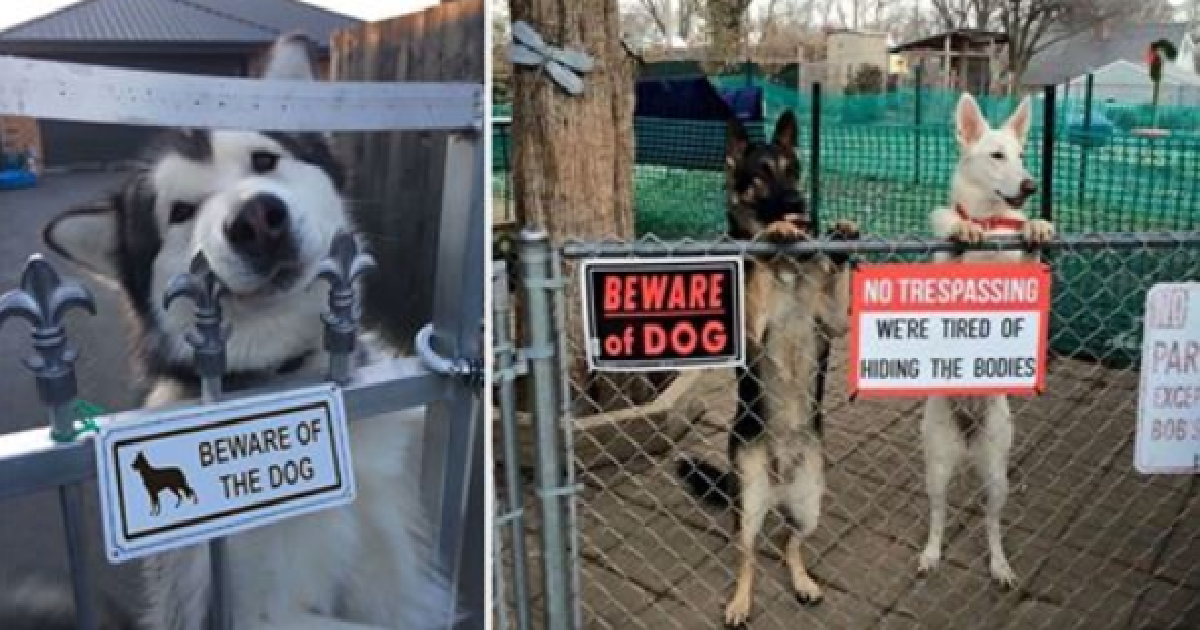
Discover the cost of putting a dog down and understand the factors that influence these expenses. Making the decision to euthanize a beloved pet is never easy, and the cost involved can add an additional layer of concern. It’s important to be informed about the various factors that can affect the cost of dog euthanasia, so you can make the best decision for your furry friend and your budget.
- The average cost of putting a dog down can range from $50 to $500 or more.
- Factors that can increase the cost include the dog’s size, location in the United States, choice between in-home or vet clinic euthanasia, being present during the procedure, the use of an IV, handling the body after euthanasia, and choosing memorial items.
- Some pet insurance providers may cover the cost of euthanasia, cremation, and burial, but coverage varies, so it’s important to check with your specific policy.
- The euthanasia process for dogs typically involves administering a sedative and then injecting a death-inducing drug to put the pet to sleep quickly and painlessly. Reflexes such as leg or head movement or deep breathing may occur, but they do not indicate pain or suffering.
- Planning and preparing for dog euthanasia ahead of time can help alleviate some of the stress and ensure you can provide the best care for your pet during this difficult time.
Factors that Affect the Cost of Putting a Dog Down
Several factors can impact the cost of putting a dog down, including location, the size of the dog, and the specific option chosen. Let’s explore each of these factors in more detail:
1. Location
The cost of dog euthanasia can vary depending on where you live. In urban areas, veterinary services may be more expensive compared to rural areas. It’s always a good idea to check with multiple veterinary clinics in your area to get an estimate of the costs.
2. Size of the Dog
The size of the dog can also affect the cost of euthanasia. Larger dogs may require larger doses of medication, which can increase the cost. Additionally, handling and cremating larger dogs may require more resources, leading to higher fees.
3. Specific Option Chosen
There are different options available for euthanizing a dog, and each option comes with its own cost. In-home euthanasia, where a veterinarian comes to your home, may cost more than having the procedure done at a veterinary clinic. Some pet owners prefer the comfort and familiarity of their home surroundings for their pet’s final moments, while others opt for the clinic environment where medical equipment and support are readily available.
Considering these factors, it’s important to weigh the costs alongside your personal preferences and the best interests of your beloved pet. By preparing and understanding the factors that affect the cost, you can make an informed decision that meets your needs and provides the most compassionate care for your dog.
| Location | Size of the Dog | Specific Option Chosen |
|---|---|---|
| Influences the cost of veterinary services | May require larger doses of medication | Different options available with varying costs |
| Urban areas may have higher costs | Handling and cremation costs may be higher | In-home euthanasia may cost more |
| Rural areas may have lower costs | Some pet owners prefer the comfort of home |
Average Cost of Putting a Dog Down
The average cost of putting a dog down can range from $50 to $500 or more, depending on various factors. It’s important to understand that the cost can be influenced by factors such as location, the size of the dog, and the option chosen.
In terms of location, the cost of dog euthanasia can vary depending on where you live. Some areas may have higher veterinary costs, which can impact the overall expense. Additionally, the size of the dog can also play a role in the cost. Larger dogs often require more medication, which can increase the price.
The option you choose for euthanasia can also affect the cost. For example, in-home euthanasia services may be more expensive than going to a veterinary clinic. However, many pet owners find comfort in the familiar environment of their own home during this difficult time.
Factors such as the use of an IV, being present during the procedure, handling the body after euthanasia, and choosing memorial items can also add to the overall cost. It’s important to consider these factors and discuss them with your veterinarian to fully understand the potential expenses involved.

Several factors can contribute to an increase in the cost of putting a dog down, including the dog’s weight, location, type of euthanasia, additional services, and memorial choices. Let’s take a closer look at each of these factors and how they can affect the overall cost.
Dog’s Weight
The size and weight of the dog can impact the cost of euthanasia. Larger dogs may require a higher dosage of medication, which can result in increased expenses. Additionally, handling and transporting larger dogs may require extra staff or equipment, adding to the overall cost.
Location
The cost of dog euthanasia can vary depending on your geographical location. Veterinary clinics in urban areas may have higher operating costs, which can be reflected in their fees. Conversely, rural areas may have lower overhead costs, resulting in lower prices for euthanasia services.
Type of Euthanasia
The method of euthanizing a dog can also impact the cost. In-home euthanasia, where a veterinarian comes to your home, may be more expensive compared to clinic-based euthanasia. This is due to the additional time and resources required to travel to your location. However, in-home euthanasia can provide a more peaceful and comfortable environment for both the dog and the owner.
Additional Services and Memorial Choices
Lastly, choosing additional services and memorial items can increase the cost of dog euthanasia. Some pet owners may opt for services such as private cremation or memorial plaques, which can add to the overall expenses. It’s important to consider these additional choices and their associated costs when planning for euthanasia.
| Factors | Impact on Cost |
|---|---|
| Dog’s Weight | Higher dosage and handling costs |
| Location | Veterinary clinic fees vary by area |
| Type of Euthanasia | In-home euthanasia can be more expensive |
| Additional Services and Memorial Choices | Private cremation and memorial items increase costs |
As you can see, several factors can contribute to an increase in the cost of putting a dog down. Understanding these factors can help you make informed decisions and plan for the financial aspects of dog euthanasia.

Some pet insurance providers may cover the costs associated with euthanasia, cremation, and burial, but it’s essential to review individual policy coverage to determine eligibility. Pet owners who have insurance coverage for their dogs can potentially receive financial assistance during the difficult time of saying goodbye to their beloved pet.
When considering pet insurance coverage for dog euthanasia, it’s important to check the policy details regarding specific terms and conditions. While some insurance plans may include euthanasia as a covered expense, others may have limitations or exclusions. It’s recommended to contact the insurance provider directly for clarification and to understand the coverage options available.
Additionally, pet owners should inquire about coverage for related costs such as cremation or burial. It’s common for pet insurance policies to offer coverage for these expenses, but again, it’s crucial to review the policy details to ensure eligibility and to understand any applicable limits or requirements.
Table: Examples of Pet Insurance Providers Covering Euthanasia Costs
| Pet Insurance Provider | Euthanasia Coverage | Cremation/Burial Coverage |
|---|---|---|
| ABC Pet Insurance | Covers a portion of euthanasia costs | Provides full coverage for cremation or burial |
| XYZ Pet Insurance | Covers full cost of euthanasia | Offers partial coverage for cremation or burial |
| 123 Pet Insurance | Does not cover euthanasia costs | Does not cover cremation or burial costs |
“Having pet insurance coverage for euthanasia and related expenses can provide peace of mind during a challenging time. It’s always best to review your policy carefully and inquire about coverage specifics to ensure you understand the benefits available to you.” – Dr. Emily Smith, Veterinarian
Remember, every pet insurance policy is unique, and coverage can vary between providers. It’s essential to thoroughly read the policy document, ask questions, and discuss options with the insurance company to fully understand what is covered and what is not. This ensures that pet owners can make informed decisions about their dog’s end-of-life care without facing unexpected financial burdens.

The euthanasia process for dogs usually involves the administration of a sedative followed by a painless injection to induce a peaceful sleep and passing. This ensures that the pet is calm and comfortable during their final moments. It’s important to note that the sedative helps the dog relax and may cause drowsiness or loss of consciousness, allowing them to peacefully transition without any distress or pain. This process is commonly performed by a veterinarian who has the necessary training and experience to handle the procedure with compassion and care.
During the euthanasia process, it is not uncommon for the dog to exhibit reflexes such as leg or head movement or deep breathing. These reflexes should not be mistaken for signs of pain or suffering. They are simply involuntary responses that occur as the body begins to shut down. It’s important for pet owners to understand that these reflexes are normal and do not indicate any discomfort for the dog.
Each dog euthanasia procedure is handled with sensitivity and respect. After the dog has passed, the owner may choose to handle the body in a way that best aligns with their personal preferences. Some options include burial, cremation, or other memorial services. It’s recommended to discuss these options with the veterinarian beforehand to understand the available choices and associated costs.

| Factors that Affect the Cost of Putting a Dog Down |
|---|
| 1. Location |
| 2. The size of the dog |
| 3. The option chosen |
Planning and Preparing for Dog Euthanasia
It is essential to plan and prepare for the euthanasia of a dog, considering factors such as who will perform the procedure, where it will take place, and how to handle the pet’s body afterwards. Making these decisions ahead of time can help ease the emotional burden and ensure a peaceful farewell for your beloved companion.
Firstly, you’ll need to decide whether you prefer the euthanasia to be carried out by a veterinarian or a professional euthanasia service. Both options have their merits, so it’s important to choose what feels right for you and your pet. If you opt for a veterinarian, ensure you have a trusted professional who understands your wishes and can provide the necessary support during this difficult time.
Next, consider where you would like the euthanasia to take place. Some pet owners choose to have it done in the comfort of their own home, while others prefer a veterinary clinic. Each option has its own advantages. In-home euthanasia allows your pet to be in a familiar environment, surrounded by loved ones, but veterinary clinics may offer a more controlled setting with access to specialized equipment if needed.
Finally, it’s important to think about how to handle your pet’s body after the euthanasia. You may choose cremation, burial, or other memorial options. Discuss these choices with your veterinarian or a pet cremation service to understand the available options and associated costs. Remember that each decision is personal and should reflect your wishes and what you feel is best for your pet.
| Planning and Preparing for Dog Euthanasia | Considerations |
|---|---|
| Who will perform the euthanasia? | Veterinarian or professional euthanasia service |
| Where will the euthanasia take place? | At home or in a veterinary clinic |
| How will you handle your pet’s body? | Cremation, burial, or other memorial options |

“Making these decisions ahead of time can help ease the emotional burden and ensure a peaceful farewell for your beloved companion.”
The Emotional Aspect of Putting a Dog Down
Putting a dog down can be an emotionally challenging decision, and it’s important for pet owners to seek support and guidance during this difficult time. The bond between a dog and its owner is often deep and profound, making the decision to euthanize a beloved pet one of the hardest choices we may ever have to make. It is natural to feel a range of emotions, from sadness and guilt to relief and even anger.
“Saying goodbye to your furry companion is never easy. It is important to acknowledge and give yourself permission to feel the emotions that accompany this process,” says Dr. Sarah Thompson, a respected veterinarian with over 20 years of experience.
“It can be helpful to have a support system in place, whether that’s family, friends, or a pet bereavement counselor. Talking about your feelings, sharing cherished memories, and receiving empathy from others who have experienced a similar loss can be incredibly healing.”
During this emotional time, it’s crucial to remember that you are not alone. Many resources are available to help you navigate the grieving process and find solace. Support groups, both online and in-person, provide a safe space to connect with others who understand the unique pain of losing a pet. Additionally, pet bereavement counselors specialize in helping individuals cope with the loss of a furry family member, offering guidance and support tailored to your specific needs.

“Remember, it is okay to grieve and take the time you need to heal,” Dr. Thompson advises.
“Each person’s grieving process is unique, and there is no right or wrong way to mourn the loss of a beloved pet. Be gentle with yourself and allow yourself to experience the full range of emotions. With time and support, you will find your way through the pain and eventually reach a place of healing and acceptance.”
In conclusion, the emotional aspect of putting a dog down is a deeply personal journey. Seek support, surround yourself with understanding individuals, and remember that it is natural to grieve the loss of your loyal companion. Take solace in the memories you shared and find comfort knowing that you provided your furry friend with love, care, and a peaceful transition.
Alternative Options to Consider
While euthanasia is a common option, there are alternative choices, such as hospice care and natural passing, which should be considered after consulting with a veterinarian. Hospice care allows for a more compassionate end-of-life experience, providing comfort and support to both the dog and the owner. It focuses on managing pain and ensuring a peaceful transition in the dog’s familiar environment.
Natural passing, on the other hand, allows the dog to pass away naturally without any medical intervention. This option is suitable for dogs who are not in immediate distress and have a terminal illness with no chance of recovery. It is important to note that natural passing can take time, and proper care and attention should be provided to ensure the dog’s comfort.
To help you make an informed decision, consult with a veterinarian who can assess your dog’s specific condition and provide guidance on the best course of action. They can answer any questions you may have and provide advice tailored to your dog’s needs.
Table: Comparison of Alternative Options
| Option | Description | Considerations |
|---|---|---|
| Hospice Care | Provides comfort and support in the dog’s familiar environment | Requires ongoing care and monitoring |
| Natural Passing | Allows the dog to pass away naturally without medical intervention | Can take time and requires proper care and attention |
Ultimately, the decision of whether to pursue euthanasia or explore alternative options depends on the individual circumstances and the best interest of the dog. Remember to consider factors such as the dog’s quality of life, level of suffering, and potential for pain management. It’s essential to prioritize the well-being and comfort of your beloved pet during this difficult time.

Coping with the loss of a pet after euthanasia can be challenging, but there are ways to navigate the grieving process and find support. Losing a beloved companion can bring a deep sense of sadness and emptiness, and it is important to give yourself time to mourn and heal. Remember, you are not alone in this journey, and there are resources available to help you through this difficult time.
One way to cope with the loss is to create a meaningful tribute to honor your pet’s memory. Consider setting up a memorial in your home with pictures, their favorite toys, and a special candle to remember them by. You can also create a scrapbook or photo album filled with cherished memories and heartfelt messages. These tangible reminders can provide comfort and serve as a tangible way to keep their memory alive.
Seeking support from others who have experienced a similar loss can also be helpful. Support groups, both online and in-person, offer a safe space to share your feelings and connect with others who understand your pain. Talking openly about your grief and sharing stories about your beloved pet can provide a sense of catharsis and validation.
Additionally, pet bereavement counseling can be beneficial for processing your emotions and learning healthy coping mechanisms. Trained professionals can help guide you through the grieving process and provide personalized support tailored to your specific needs. They can offer guidance on self-care practices, help you navigate feelings of guilt or regret, and provide a compassionate ear to listen to your thoughts and emotions.
Remember, grief is a personal journey, and it is important to honor your individual process. Take the time you need to grieve and remember that healing takes time. Reach out for support when you need it, and be gentle with yourself as you navigate this challenging time.
| Resources for Pet Owners |
|---|
| Pet Bereavement Support Groups |
| Pet Bereavement Counseling |
| Online Pet Loss Communities |
| Books on Pet Loss and Grief |
“Until one has loved an animal, a part of one’s soul remains unawakened.” – Anatole France

There are various resources available to pet owners facing end-of-life decisions for their dogs, including pet bereavement counseling and support groups. When facing the difficult decision to put a beloved pet down, it can be incredibly helpful to have a support system in place to provide guidance and comfort during this challenging time. Pet bereavement counseling can offer a safe space to express emotions and work through the grief associated with losing a furry family member.
Support groups are another valuable resource for pet owners, providing a community of people who have experienced similar loss and can offer understanding and empathy. These groups often meet in person or virtually and provide a space to share stories, memories, and coping strategies. It can be comforting to connect with others who have walked a similar path and who can offer support and validation.
Additionally, many veterinary clinics and animal organizations offer resources such as brochures, online articles, and hotlines to help pet owners navigate the difficult decisions and emotions surrounding end-of-life care. These resources can provide valuable information on topics such as the euthanasia process, coping with grief, and making memorial arrangements for your beloved pet. Remember, you don’t have to go through this journey alone – reach out and access the support and resources available to you.

Understanding the cost and emotional implications of putting a dog down is essential for pet owners facing this difficult decision. The cost of dog euthanasia can vary depending on several factors, including location, the size of the dog, and the option chosen. On average, the cost can range from $50 to $500 or more.
There are also additional factors that can increase the cost of dog euthanasia. These include the dog’s weight, the location within the United States, the choice between in-home or vet clinic euthanasia, being present during the procedure, the use of an IV, handling the body after euthanasia, and choosing memorial items.
If you have pet insurance, it’s important to check your policy to see if it covers the cost of euthanasia, cremation, and burial. While some popular pet insurance providers may offer coverage for these expenses, the specific coverage details can vary.
The euthanasia process for dogs is designed to be quick and painless. It typically involves administering a sedative and then injecting a death-inducing drug to put the pet to sleep peacefully. During the procedure, it’s important to understand that reflexes such as leg or head movement, or deep breathing, may occur. However, these reflexes do not indicate pain or suffering in the animal.
Planning and preparing for the end of a pet’s life is highly recommended. Considerations such as who will perform the euthanasia, where it will take place, and how to handle the pet’s body afterwards should be thoughtfully addressed. Taking the time to plan ahead can help ensure a peaceful and respectful goodbye for your beloved companion.
FAQ
How much does it cost to put a dog down?
The cost of putting a dog down can vary depending on various factors such as location, dog’s size, and the option chosen. The average cost can range from $50 to $500 or more.
What factors affect the cost of putting a dog down?
Factors that can affect the cost include the dog’s weight, location in the United States, the choice between in-home or vet clinic euthanasia, being present during the procedure, the use of an IV, handling the body after euthanasia, and choosing memorial items.
Does pet insurance cover the cost of dog euthanasia?
Some popular pet insurance providers may cover the cost of euthanasia, cremation, and burial, but coverage varies, so it’s important to check with the specific policy.
What is the euthanasia process for dogs?
The euthanasia process typically involves administering a sedative and then injecting a death-inducing drug to put the pet to sleep quickly and painlessly. The pet may have reflexes such as leg or head movement or deep breathing, but these do not indicate pain or suffering.
How can I plan and prepare for dog euthanasia?
It is recommended to plan and prepare for the end of a pet’s life ahead of time, considering factors such as who will perform the euthanasia, where it will occur, and how to care for the pet’s body.






